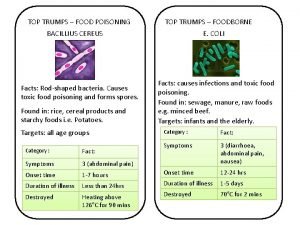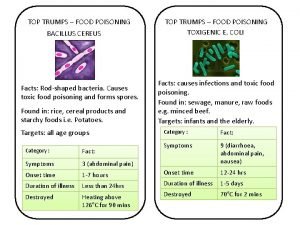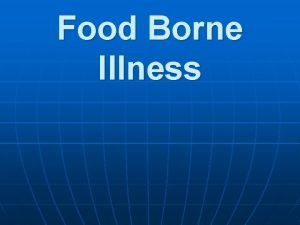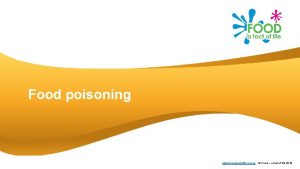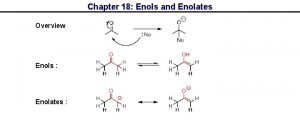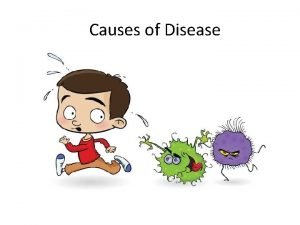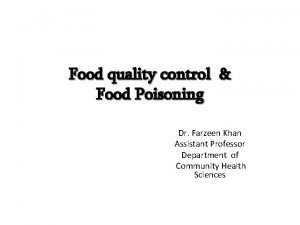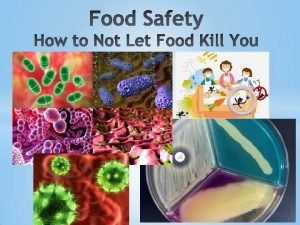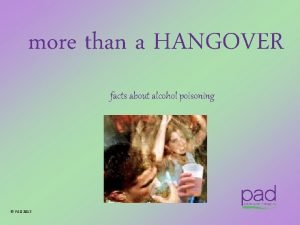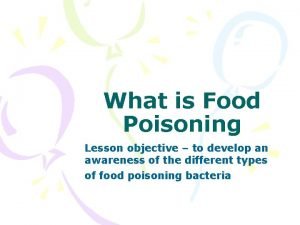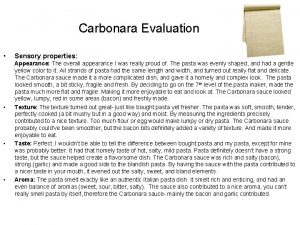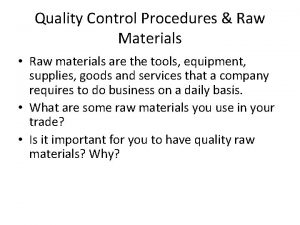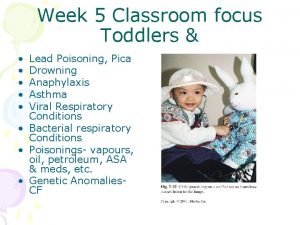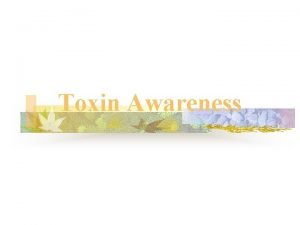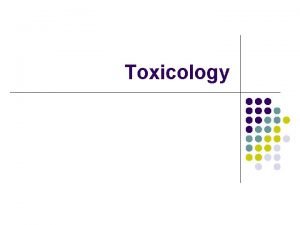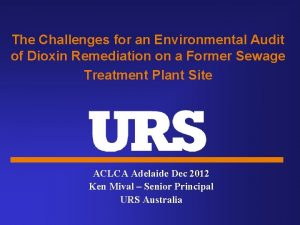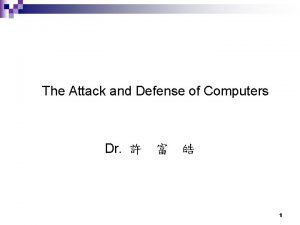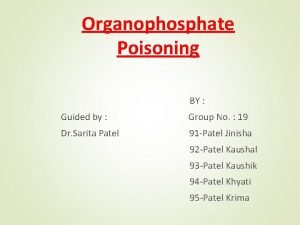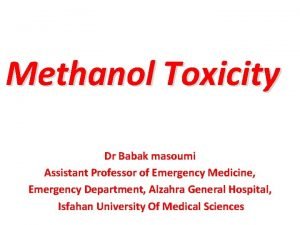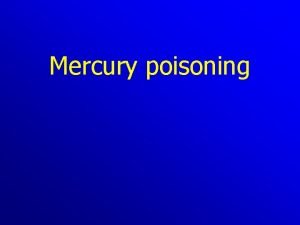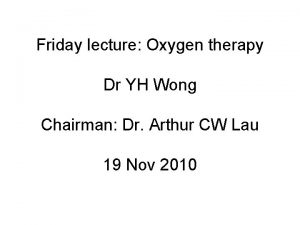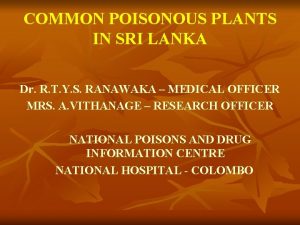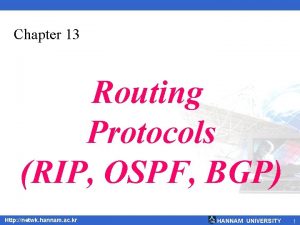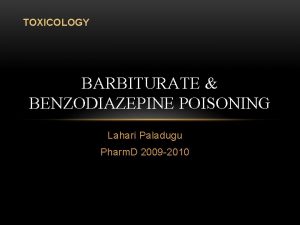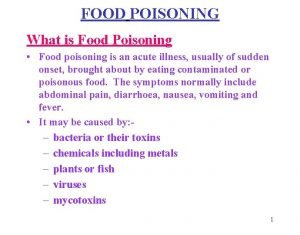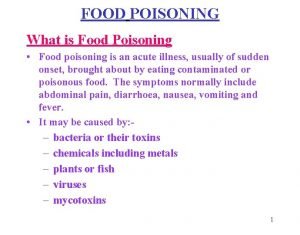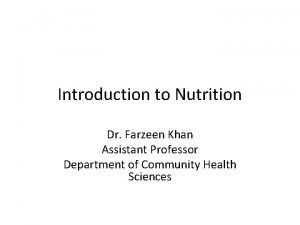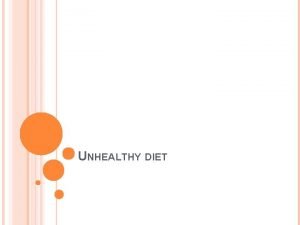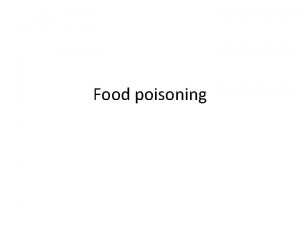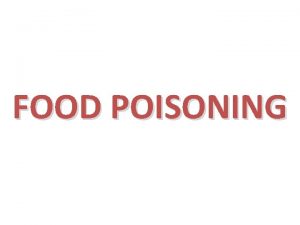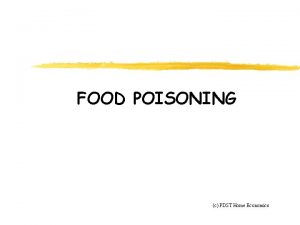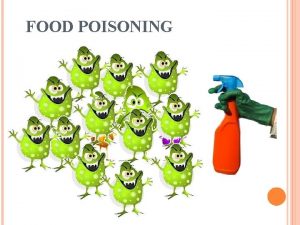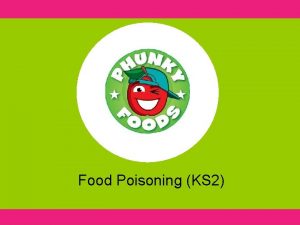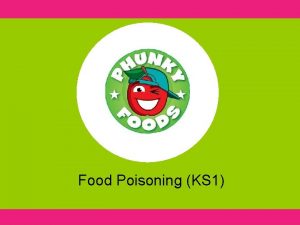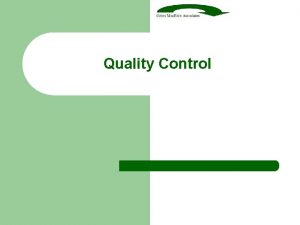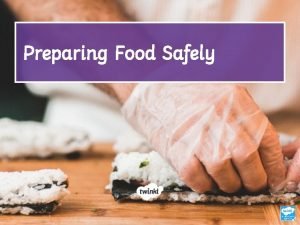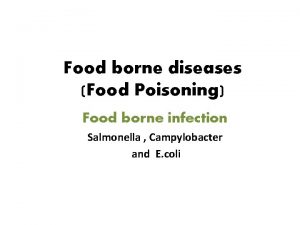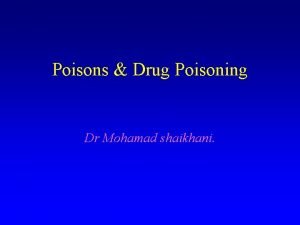Food quality control Food Poisoning Dr Farzeen Khan

































- Slides: 33

Food quality control & Food Poisoning Dr. Farzeen Khan Assistant Professor Department of Community Health Sciences

o Food Hygiene o Food Poisoning o Food Pasteurization o Food Fortification o Food Additives o Food Adulteration

FOOD HYGIENE

• Food hygiene are the conditions and measures necessary to ensure the safety of food from production to consumption. • Food can become contaminated at any point during slaughtering or harvesting, processing, storage, distribution, transportation and preparation.

• Lack of adequate food hygiene can lead to foodborne diseases and in severe cases even to death of the consumer. • Food Hygiene is a scientific discipline describing handling, preparation, and storage of food in ways that prevent food borne illness.

Food borne Illness • Commonly known as food poisoning, foodborne illness is caused by eating food that is contaminated by bacteria or other harmful substances. • Infectious organisms- including various bacteria, viruses & parasites-or their toxins are the most common causes of food poisoning.

How does food become hazardous? • Food becomes hazardous by contamination. Contamination is the unintended presence of harmful substances or microorganisms in food. • Micro-organisms occur naturally in the environment, on cereals, vegetables, fruit, animals, people, water, soil and in the air.

Food Spoilage • Changes in food, either through enzyme deterioration of food or micro-organism growth, will eventually lead to the food becoming inedible or unsafe if eaten. • The rate of deterioration depends on a variety of factors which must be controlled carefully. • Contaminants may be already present in the food, e. g. salmonella in chicken or transferred to the food by humans, flies, rodents and other pests.

Classification of Food – borne Illnesses Bacterial diseases (infections & intoxications) Viral diseases Parasitic diseases Typoid fever, paratyphoid fever, Salmonellosis, Staphyloccal intoxication, Cl. perfringens illness Botulism b. cereus Food Poisoning e. coli diarrhoea non-cholera vibrio illness V. parahaemolyticus - infection, streptococcal infection, Shigellosis, Brucellosis Viral hepatitis, Gastroenteritis Taeniasis, Hydatidosis, Trichinosis, Ascariasis, Amoebiasis, Oxyuriasis

Classification of Food – borne Illnesses Chemical poisons Pesticides, heavy metals (arsenic, lead, cadmium, etc. ) Food toxins Lathyrism, Epidemic dropsy, Aflatoxins

Foodborne Illness Can Cause More than a Stomach Ache!

Signs and symptoms Upset stomach Vomiting Fever Diarrhea Dehydration (sometimes severe)

Possible more severe conditions Meningitis Paralysis 13

High risk foods Some foods are high-risk, as they provide the ideal conditions needed for micro-organisms to grow. These include: • meat and meat products; • milk and dairy products; • fruit. If these foods become contaminated with food-poisoning microorganisms and conditions allow them to multiply, the risk of foodpoisoning increases.

People with a higher risk of foodborne illness Infants Young children and older adults Pregnant women People with weakened immune systems and individuals with certain chronic diseases

Factors affecting food poisoning Some common factors leading to food poisoning include: • storage at ambient temperature; • inadequate cooling; • inadequate reheating; • under cooking.

Factors affecting food poisoning More common factors leading to food poisoning include: • consuming raw food; • improper warm holding (i. e. holding ‘hot’ food below 63ºC); • infected food handlers; • contaminated processed food; • poor hygiene.

Prevention of food Poisoning • Proper care & hygiene should be maintain during preparation of food. • Food should be properly cooked at proper temperature. • Don’t keep food outside for more than two hours and store it at low temperature. • Don’t eat raw vegetables or unpeeled food. • Make sure that food from animal sources is cooked thoroughly or pasteurized.

Key Principles Of Food Hygiene • The five key principles of food hygiene, according to WHO, are: 1. Prevent contaminating food with pathogens spreading from people, pets, and pests. 2. Separate raw and cooked foods to prevent contaminating the cooked foods. 3. Cook foods for the appropriate length of time and at the appropriate temperature to kill pathogens. 4. Store food at the proper temperature. 5. Do use safe water and cooked materials.

Pasteurization • Derives its name from the mild heat treatments developed by Louis Pasteur to prevent or delay spoilage of food. • Today it refers to a heat process that results in destruction of all vegetative cells (non-spore formers) of pathogens expected in that food.

Pasteurization • The process of pasteurization is based on food safety and not on food preservation alone. • It kills target pathogens. • Extends shelf life ( shelf-life refers to the amount of time from packaging of the food product to the time of spoilage under appropriate storage conditions). • Does not inactivate all microbes present. • Pasteurized food usually requires additional control measures (such as refrigeration, low p. H) to prevent rapid spoilage.

Pasteurized Foods • The most common pasteurized food is milk. • Originally designed to eliminate Mycobacterium tuberculosis and Coxiella burnetti. • Fruit juice • Spoilage yeast and bacteria, E. coli.

Pasteurized Foods • Liquid egg • Salmonella and spoilage bacteria • Honey • Spoilage yeast • Meat surfaces (steam, hot water) • E. coli , Salmonella, Campylobacter

Milk Pasteurization Time/Temperature Combinations • High Temperature Short Time (HTST) 15 sec at 72 o. C. • Low Temperature Long Time (LTLT) 30 min at 63 o. C. • These pasteurization time/temperatures are considered to be equivalent. • Heat treatments are established on the basis of safety first (elimination of pathogens) and spoilage (extension of shelf life) second.

Food Fortification • Food fortification is the process whereby nutrients are added to food ( relatively in small quantities) to maintain or improve the quality of the diet of a group , community or population. • It is a public health measure to prevent or control some nutritional disorders.

Criteria fortification 1. Amount of nutrient added must provide an effective supplement for low consumers. 2. Not harmful to high consumers. 3. Do not cause noticeable change in the taste, smell, appearance or consistency. 4. Cost should be economical.

Effectiveness • Fluoridation of drinking water in endemic areas to prevent dental caries. • Iodization of salt to prevent IDD. • Vitamin A fortification. • Iron to salt or Flour.

Food Additives • Food additives are non nutritious substances which are added intentionally to food , generally in small quantity to improve its appearance , flavor, texture of storage properties. • This is the concept of pickling or drying. • When it is in excess amounts to adulteration.

Classification of additives 1. Coloring agents: considered as safe for human consumption. 2. Flavoring agents: sweeteners (Saccharin), Preservatives( Sorbic acid, Sodium Benzoate), acidity imparting agents (Citric acid, Acetic acid). 3. Pose health hazards among consumers - contaminants through packing, processing steps, farming practices ( insecticides).

Food adulteration • Defined as Mixing, substitution, abstraction, concealing the quality, putting up decomposed food for sale, misbranding or giving false labeling and addition of toxicants to food, which are having adverse effect on the health of the consumer is called as food adulteration.

Disadvantages • Paying more money for a lower quality foodstuffs. • Some forms of adulteration are injurious to health. • Practices vary from one part of the country to another, from time to time.

Adulterants used in food Milk - Addition of water/removal of fat. Skim milk - soluble starch. Cream -foreign fats. Ghee -Hydrogenated fat/animal fat. Vegetable oils -Cheap/non edible oil like linseed, mineral oils. Wheat and rice -stones Bengal gram dhal -Kesari dhal. Chilli powder- Starch colored by tar dye. Black pepper- Dried papaya seeds Honey -colored sugar syrup. Tea - exhausted tea leaves.

THANK YOU
 Quality control and quality assurance
Quality control and quality assurance Quality management pmp
Quality management pmp Pmp gold plating
Pmp gold plating Quality control concepts
Quality control concepts Food poisoning onset
Food poisoning onset Bacillus cereus symptoms
Bacillus cereus symptoms Icd x kecelakaan lalu lintas
Icd x kecelakaan lalu lintas Gastroenterritis
Gastroenterritis Foodafactoflife.org.uk
Foodafactoflife.org.uk Food poisoning cause
Food poisoning cause Food poisoning cause
Food poisoning cause Common factors that can lead to food poisoning
Common factors that can lead to food poisoning Sheila tarrant
Sheila tarrant Exaggerated sims
Exaggerated sims Lesson plan on food poisoning
Lesson plan on food poisoning Carbonara food poisoning
Carbonara food poisoning Raw material receiving process
Raw material receiving process Tripod position
Tripod position Dioxin poisoning
Dioxin poisoning Dioxin poisoning
Dioxin poisoning Dioxin poisoning
Dioxin poisoning Seo poisoning wikipedia
Seo poisoning wikipedia Poisoning the well fallacy
Poisoning the well fallacy Organophosphate poisoning
Organophosphate poisoning Methanol poisoning
Methanol poisoning Mercury poisoning symptoms
Mercury poisoning symptoms Whats lead poisoning
Whats lead poisoning Oxygen therapy
Oxygen therapy Divi kaduru tree
Divi kaduru tree Prinso poisoning
Prinso poisoning Chapter 17:8 providing first aid for cold exposure
Chapter 17:8 providing first aid for cold exposure Rip, ospf, bgp
Rip, ospf, bgp Arp cache poisoning attack fix
Arp cache poisoning attack fix Lahari paladugu
Lahari paladugu




